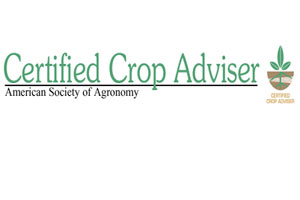Nitricity Selected for Elemental Excelerator Cohort of Climate Tech Startups
Leading climate tech investor, Elemental Excelerator, announced today their 11th cohort of investments, comprising 17 companies focused on climate technology and decarbonization. Renewable fertilizer pioneer, Nitricity, has been included in the cohort as part of Elemental Excelerator’s focus on climate resilience.
“Nitricity solves two crucial components of the food system’s emissions: removing fossil fuels from the production of fertilizer, and preventing the need to transport that fertilizer from across the world,” said Mitch Rubin, Director of Innovation, Elemental Excelerator. “We need local, renewable production of fertilizer to enhance our resilience to global fertilizer markets, given massive price increases this year. Nico and his team are extremely committed to improving how we grow food and providing better alternatives to farmers, and we’re very excited to be working with them.”
The investment and guidance from Elemental Excelerator will bolster Nitricity’s plans for growth, including operating its renewable fertilizer technology at scale in agricultural applications. The funding will support Nitricity’s ability to produce agriculture-grade climate-smart nitrogen fertilizers such as calcium nitrate to be tested in the field, with one such trial to be conducted in almond orchards in partnership with Olam Food Ingredients (ofi), a global leader in natural food ingredients and raw materials.
“The support from Elemental Excelerator and membership in this esteemed cohort will be an important catalyst for Nitricity’s next phase of growth,” said Nicolas Pinkowski, CEO and Co-Founder of Nitricity. “Our focus is now on scaling our technology to establish regionalized fertilizer production for farmers.”
Read the complete press release from Elemental Excelerator and learn more about Elemental Excelerator Cohort 11.
About Nitricity
Nitricity produces nitrogen fertilizer with only air, water and renewable electricity. Founded by a team of graduate students from Stanford University in 2018 – Nicolas Pinkowski serving as CEO, Joshua McEnaney serving as president and CTO, and Jay Schwalbe serving as CSO – the company is scaling its technology to provide cost-effective, regional, and decarbonized fertilizer production. For more information, please visit www.nitricity.co.
About Elemental Excelerator
Elemental Excelerator is a leading non-profit investor focused on scaling climate solutions and
social impact for all communities. Elemental fills two gaps that are fundamental to tackling
climate change: funding first-of-a-kind projects for climate technologies in real communities, and
embedding equity and access into climate solutions.

















 “Farmers and ranchers are innovative and always trying to do the best they can to protect their land and water; but we all can do better. I think our producers respond to change in very good ways. Look, we have gone through technological advances; we are more technically precise in using fertilizers and water,” Carleton said.
“Farmers and ranchers are innovative and always trying to do the best they can to protect their land and water; but we all can do better. I think our producers respond to change in very good ways. Look, we have gone through technological advances; we are more technically precise in using fertilizers and water,” Carleton said.






